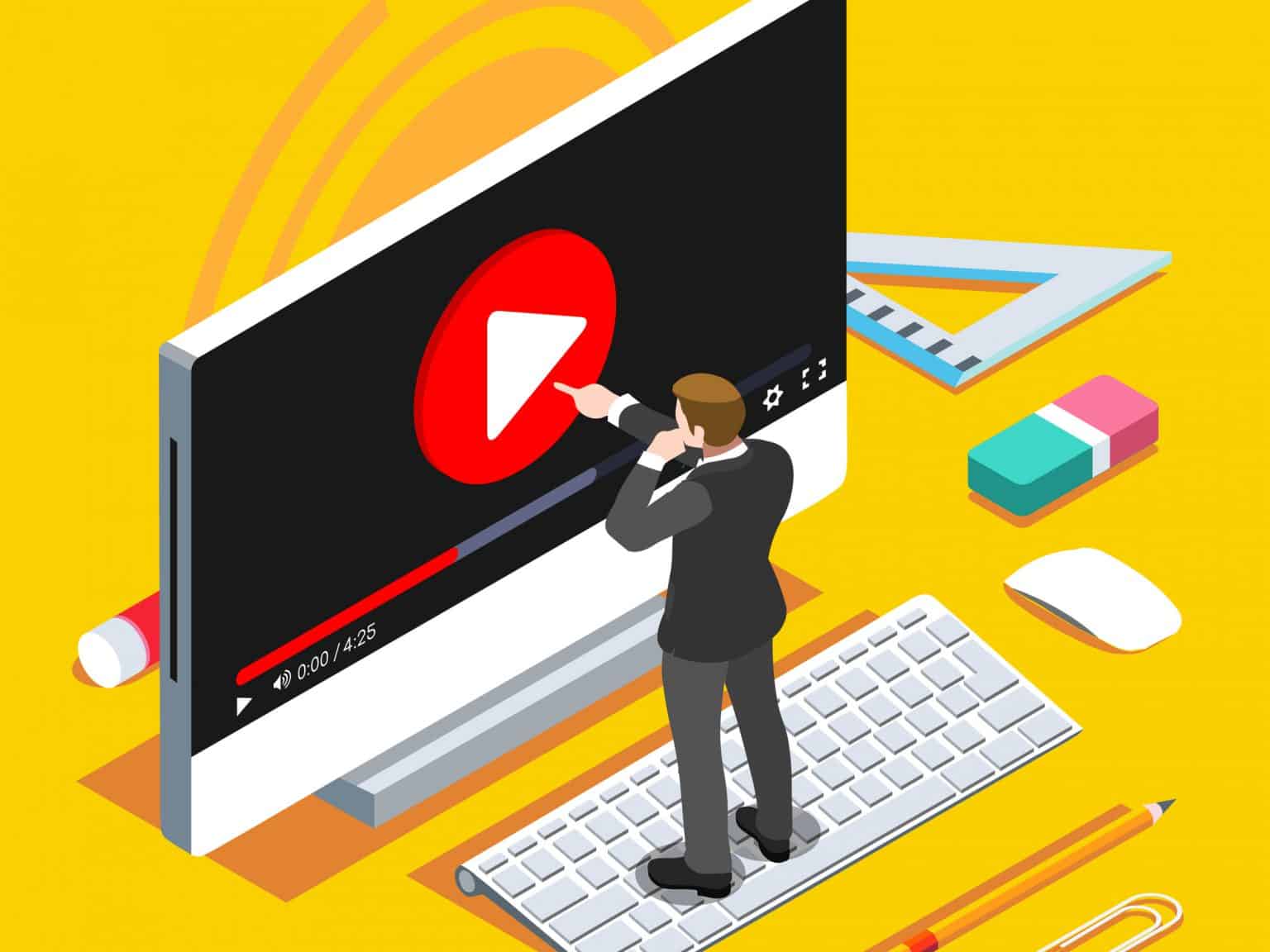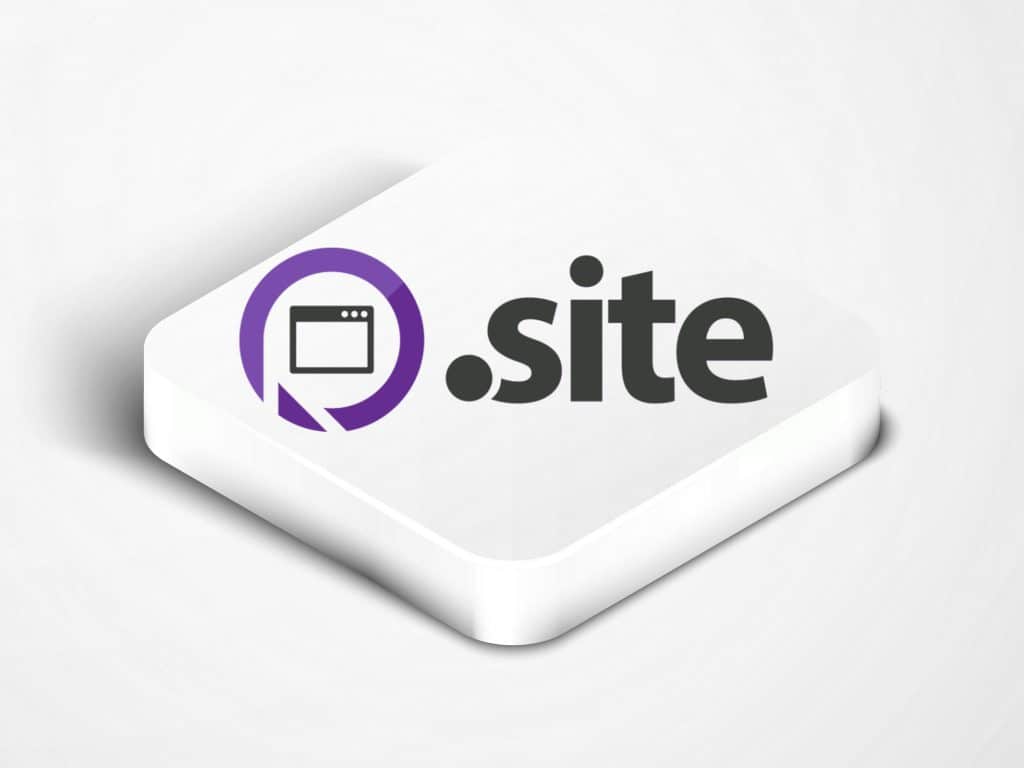How to Run and Host a Webinar
- By Douglas Moore
- December 4, 2020

Webinars offer a meaningful and accessible way to share ideas and market products. You get to deliver high-quality content that is beyond everyday marketing to your audience, be it students, customers, employees, or colleagues. They’re an excellent method for engaging your audience: it’s informative, personal, and interactive.
And guess what: it works. Webinars produce amazing conversion rates – according to research done by on24.com, the registrant-to-attendee conversion rate for webinars is an incredible 55%. That could be you! Especially if you create webinars with worthwhile content, i.e. content that is resourceful, helpful, and memorable – you’re very likely to get a loyal base of attendees.
So – webinars are pretty great, but they also demand work and effort. Don’t worry though, it’s nothing you can’t handle. It’s not that they’re hard to make, it’s just that you need to be familiar with the process before getting started – and that’s what we’re here for. We’ll guide you through every step of running and hosting your very own webinar. You’ll learn how to come up with topics, create content, brand and market your webinar, send out invitations, and finally, how to host your webinar.
What Is a Webinar and How Does It Work?
A webinar, as the name implies, is a web-based, online seminar. Webinars are a customizable online event which businesses and organizations can broadcast to a select group of attendees. They can be free or paid, and they cover all sorts of content: education or academic research, employee training, user onboarding, marketing a product, and so on.
As a type of online event, webinars can be organized by business companies and organizations. Using webinar software, such as Zoom – which has become enormously popular in the age of a pandemic – you can reach an audience worldwide to share your ideas and knowledge.
The way webinars work is they’re broadcast online to a group of signed-up attendees. They contain video and audio and are created using a computer. You can use online conference tools and software which we’ll go over in the following sections. Through the video element, the audience can see the speaker and any other visual elements they want to share, such as PowerPoint presentations, slideshows, websites, graphs, videos, screen sharing, text documents, and so on. While showing visual components, the host continues speaking to clarify the content to the audience.
One of the most alluring aspects of webinars is that they’re interactive. Attendees can ask questions and make comments in real time by posting comments on the live feed or related social media, sending instant messages, and via email.
What Are the Benefits of a Webinar?
Let’s take a look at some of the benefits of hosting a webinar.
Get High Response Rates
Webinars result in some of the highest response rates and conversion rates. As we’ve already mentioned, the registrant-to-attendee conversion rate is 55%. This number drops a bit for webinars with over 100 attendees to 43%, but it’s still pretty great. Webinars on communications and training have especially high conversion rates of 69% and 44%, respectively. Keep in mind that good conversion rates are anything above 35%. So, even the webinars with lower conversion rates are still above 35% – marketing goes as far as 40% and continuing education 37%.
Reach a Broader Audience
One of the reasons why webinars are so attractive is that they allow you to reach a new well of potential clients. Not to mention that all the registered attendees allow you to expand your mailing list and add new persons to your business database, so you can follow up with products and services later on to a more targeted audience.
In other words, you get a database of qualified leads which can later be turned into sales.
They Are Personal
From the client’s side, webinars are attractive because they allow communication that’s somewhat more personal than most other channels thanks to their interactive nature. People feel like you care more and that you’re there and willing to answer their questions and address their comments.
Establish Yourself as an Expert
When you hold a webinar on a certain topic that you’re knowledgeable about, you basically establish yourself as an expert and a professional. When potential clients see you as a reliable source with a good deal of know-how, they’ll be much more comfortable and confident in purchasing your products or services and asking for your help.
Build Brand Awareness
Webinars are a great way to share your brand with the world. Even if you’re offering an educational video on how to use a certain type of software, you could be simultaneously marketing your own brand’s related product. Or, if you’re teaching a webinar about permaculture, you may recommend your own organic fertilizer. In any case, it allows you to establish and grow your online presence, as well as set the voice for your brand.
Create Content for Your Website
One thing you should most certainly do is record your webinar. That way, you can upload it as a video on your website, where it will remain an invaluable source to your users. And if they missed the premiere, they’ll be able to come back to it as they please.
Onboard New Employees
Now more than ever, onboarding new employees is a bit tricky. But even before the situation we find ourselves in today (with the coronavirus), webinars were a great way for team leaders and business owners to welcome and onboard their new employees, especially if they’re dealing with a group of people working remotely. Sharing the ins and outs of a business is better done live, rather than through long PDF files.
How to Record a Webinar
Now that you know why you should run and host your very own webinar, let’s look at how you can do it.
1. Choose a Topic and a Title for Your Webinar
You should do a bit of research to make sure you come up with a fun topic and an attention-grabbing title for your seminar. Do make sure you have a clear purpose in mind, i.e. decide what the aim of your webinar is. Whether it’s to generate leads or market your product, you want to tell a good story that will captivate people and keep their attention. You already have a whole lot of knowledge – this is your chance to share it in an hour-long webinar.
It’s always a good idea to brainstorm with your team. You can see how your ideas resonate with others and get some valuable input from them. Having people from different departments of your business with different backgrounds can help you get more perspectives to ultimately formulate the best topic for your webinar.
If you’re feeling strapped for ideas, a good place to start is by looking at the market demand – what people are searching for and what they are interested in. What are popular topics on social media like Facebook or Twitter, and what are folks discussing on forums like Reddit? In order to find out what your niche (your target audience) is interested in, you should visit their territory.
Analyze your website’s traffic. What pages with what type of content are bringing in more visitors? It will also help to check out what sort of content your competitors are creating which has proven to resonate with users.
Once you’ve settled on a topic, it’s time to come up with a title that does it justice. Look for keywords and keyphrases that people are searching for that would be compatible with your topic so that you can draw more organic traffic to the webinar’s landing page. The title should be concise and precise, so people know exactly what they’re registering for. Include a brief description that explains the webinar and presents the speaker. For instance:
Title: How to boost your SEO
Description: SEO expert John Smith shares the tricks of the trade in our webinar. Learn top tips on how to boost your SEO, increase organic traffic to your website, and eventually, increase your revenue.
You may also wish to specify who the webinar is intended for. Is it for beginners or industry professionals? This may help draw in the right audience, without leaving anyone feeling short-changed.
2. Choose Your Webinar Format
There are a couple of different webinar formats you can choose from. Which format is best depends on what you’re trying to communicate with your audience, as each is best suited to different purposes. Let’s take a look.
Education/Academia
Webinars can be devoted to sharing introductory or advanced knowledge on education or academic topics. For instance, you could offer an intro webinar for folks looking to get into art welding, or you could share research in a specific niche – like court poets in the early modern Ottoman Empire.
Tricks of the Trade
Sharing tricks of the trade can get you an engaged audience, eager to learn about the inner workings of an industry. Of course, it helps to have a speaker who already has some authority with the attendees. Imagine Linus Torvalds, the principal developer of Linux, giving out software tips. That’s the sort of thing people would be lining up for! We’re not saying find Linus and recruit him to your webinar, but if you’re giving out industry secrets, choose the right person to tell them.
Panel Discussion/Q&A
This can be your whole webinar or a part of your webinar. Allocating Q&A time for your attendees is a great idea if you’re promoting a product, explaining to your customers how to use or fix something, or onboarding new employees. It can also help you generate content in an organic way based on what people ask or make comments about.
Interview
If you have a fun and/or knowledgeable person in mind that you could get to participate in your webinar, you may wish to consider following an interview format. Think of it as a subcategory of the “tricks of the trade” type webinar. Getting someone who’s popular and really knows their stuff can help attract viewers and boost awareness of your brand. Plus, doing an interview can help distribute the amount of content you’ll have to come up with – after all, your interviewee will be contributing significantly. Of course, you should prepare your questions with great care and do a lot of research on your interviewee and topic. Nothing frustrates interviewees more than an unprepared interviewer asking cliche questions on exhausted subjects.
If you go for an interview, you can do it over the phone, over video, or through screen sharing.
3. Choose Your Presenter(s) and Your Team
Perhaps you, someone on your team, or an outside professional will be speaking at your webinar. Or maybe, all of the above. In any case, there are three criteria every successful presenter should fulfill (other than being well-prepared).
- Knowledge of the topic. Your presenter should be qualified to speak on whatever your webinar’s subject is. If there’s a Q&A portion, they’d better be ready to answer some unexpected, tough questions.
- Public speaking skills. Speaking at a webinar may not be as nerve-racking as speaking to a visible crowd of people, but the speaker would be talking publicly, to an audience, nonetheless. So, they should be able to keep their wits about them, use clear language, and construct easily comprehensible sentences.
- Charisma. You don’t need to be one of the great orators of history, but having some charisma will help deliver your message better and engage the audience. Bringing emotion to your vocal frequency, being excited about the subject, and communicating directly with the audience are some aspects of being charismatic.
Of course, you’ll also need people behind the scenes. If you’re answering questions, you’ll need an admin or moderator who will pick out questions and deliver them to you. You’ll probably also need tech support to ensure that your internet connection is smooth, there aren’t any problems with the livestream, and that your video/audio is working properly.
4. Organize Your Webinar
Speech (Audio)
Once you’ve picked out the topic, it’s time to prepare how you’ll deliver it. Preparation is key to any good lecture, interview, or tutorial. So although you shouldn’t be reading off a piece of paper, it’s good to outline the program for your webinar to cover all your main talking points.
In general, it’s best to start with an introduction that summarizes who you are and what the webinar is about. Then, you can move onto the “body” of the webinar, or the various arguments/talking points. You can flesh out each of them and give examples. In the end, you may wish to have a conclusion followed by an open panel, i.e. Q&A section where your attendees can join in on the discussion.
Visual Elements
Of course, it’s not just the talking that needs to be organized, it’s also your visual presentation tools. For instance, if you want to share a slideshow with your audience, you should carefully tailor it in a way that will inform your audience without overwhelming it. This means that the slideshow will provide important visual information, but won’t contain too many words, paragraphs, or even too many slides. You’re already saying all those words, why should your slides repeat all of it?
Overall, when it comes to slideshows, it’s best to keep it simple, clean, and relevant.
Gear
Make sure you have all the gear necessary for your webinar. A computer is a must – you can’t really host a webinar from your smartphone. You can use your laptop’s camera as long as it’s decent and not too blurry. You can also use your computer’s microphone, but getting a standalone digital mic will significantly improve the quality of the sound, which is quite important in a webinar. Don’t worry though, you can purchase a good quality microphone for anywhere between $100 and $250.
Managing Time
Webinars generally last between 30 and 60 minutes. Of course, you can always do a longer webinar if you have a broader program and information that will keep audiences tuned in. It’s best to do a practice round before broadcasting your webinar to approximate the time so that you can also let your attendees know what to expect.
We recommend that you leave about 15 minutes or so of Q&A. After all, interactivity is one of the alluring aspects of webinars.
Prepare Engagement Tools
A Q&A session is one example of an engagement tool. Others are downloadable resources, surveys, polling, interaction on social media, and so on. According to surveys, 8 out of 10 webinar hosts have reported that users engage with this sort of interactive content.
5. Choose the Time and the Place
You may think that the time won’t make much of a difference, so long as it’s after work hours. However, webinars taking place during days in the middle of the week – Tuesday, Wednesday, and Thursday – have statistically proved to have the highest number of attendees. And the favorite time for attending isn’t after work – it’s at 11 AM (16%) and then 2 PM (15%).
As for the place, obviously, it’s the internet, but the question here is the environment or setting where you’ll be shooting the webinar. Generally, it’s best to choose a place that looks professional and a place where you won’t be interrupted. Your office or a room in your home will do just fine, so long as they look neat and the background isn’t distracting.
6. Choose a Platform to Host Your Webinar
There are lots of great platforms from which you can host your webinar. It’s best to look over their respective features and prices to choose one that’s best for your purposes. In addition to Zoom, which we’ve already mentioned, we recommend WebinarNinja, Demio, and GoToWebinar. All these options allow you to host free and paid webinars.
They also offer various features and tools based on which pricing plan you opt for, like email reminders, targeted ads on social media, live chat, and other user engagement tools, etc.
7. Promote and Market Your Webinar
Create a Landing Page
First things first: you need a landing page for your webinar. The landing page should be on your main website, and keep in the same style as the rest of your website. Make sure to include the date, time, and description of the webinar. Additionally, this is where you put a big button that says “Register,” leading attendees to the registration page. When attendees register, don’t ask for unnecessary personal information – it will increase the chances of ending up with an abandoned cart on your hands. Keep it simple by asking for basic and necessary information, such as name, email, and so on.
Promote Your Webinar
The best way to promote a webinar is through email. After all, the greatest conversion rate comes from existing customers and users. So, take out that mailing list or database of users, and make sure that everyone on there gets an invitation. The best days for sending promotional emails – days which have proven to result in the most attendees – are again middle-of-the-week days. Tuesday, Wednesday, and Thursday account for about 65% of all registrations. Keep in mind that you should also send a reminder before the webinar so that no one that’s signed up forgets to attend it.
Other ways you can promote your webinar are targeted banner ads, social media ads, posts on your social media accounts (Twitter, Instagram, Facebook, LinkedIn), influencers, paid content on popular websites, etc.
8. Run and Host Your Webinar
After all those practice rounds, the day comes when you finally run and host your webinar to an audience. You, your team (admin, assistant, tech support), and your gear (make sure your internet connection is smooth!) are ready to give to the people what they want.
It’s good to keep a glass of water near you in case your throat feels dry. Keep a list of your schedule and main talking points, too, but don’t read off it. It’s there to serve as a reminder should you lose your train of thought.
Make sure you record your webinar so that you can post it as a resource on your website for later viewing. Your platform of choice will include a record (or “Rec.”) option in the menu. Find it before the very last minute, so you don’t have to fumble about confused in front of your viewers.
And last of all – break a leg!
View Related Articles

All About the .site Domain Extension
In this article, we’ll provide you with the answers to the most common questions, such as when was .site introduced, who administers it, and what type of websites .site extension suits the best.

All About The .world Top-Level Domain
The .world domain extension doesn’t have any limitations. It’s the world, right? In any case, this domain extension offers incredible flexibility and variability. It also makes your website sound grand, informed, and with a tendency to worldwide unity.

How Long Does It Take for DNS to Update?
DNS propagation, or DNS updating, refers to the period of time between making a change to your domain name and seeing that change reflected in DNS across the internet. Propagation occurs after a few different types of actions, including making a change to your DNS records, or changing your domain name’s WHOIS information.